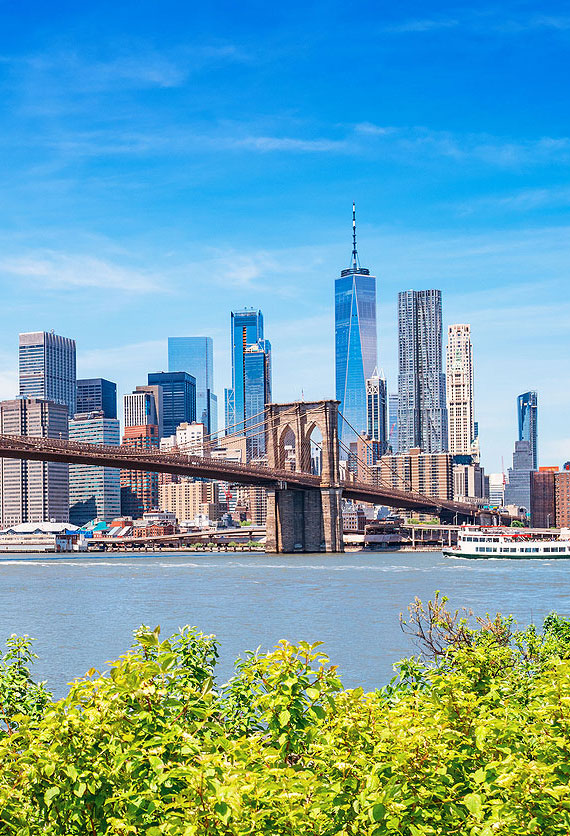The Big Apple is one of the world’s most popular places to visit. As America’s largest metro area, New York City contains five distinct boroughs — Manhattan, Queens, Brooklyn, the Bronx, and Staten Island. These five boroughs not only have their own presidents and local government, but they also boast their own unique cultural heritage. The differences between the various boroughs and neighborhoods within them are part of what makes New York such a fascinating city to so many. Have you visited all five boroughs? Dive into these interesting facts about each of the five boroughs of New York City.
History of the Boroughs of New York City
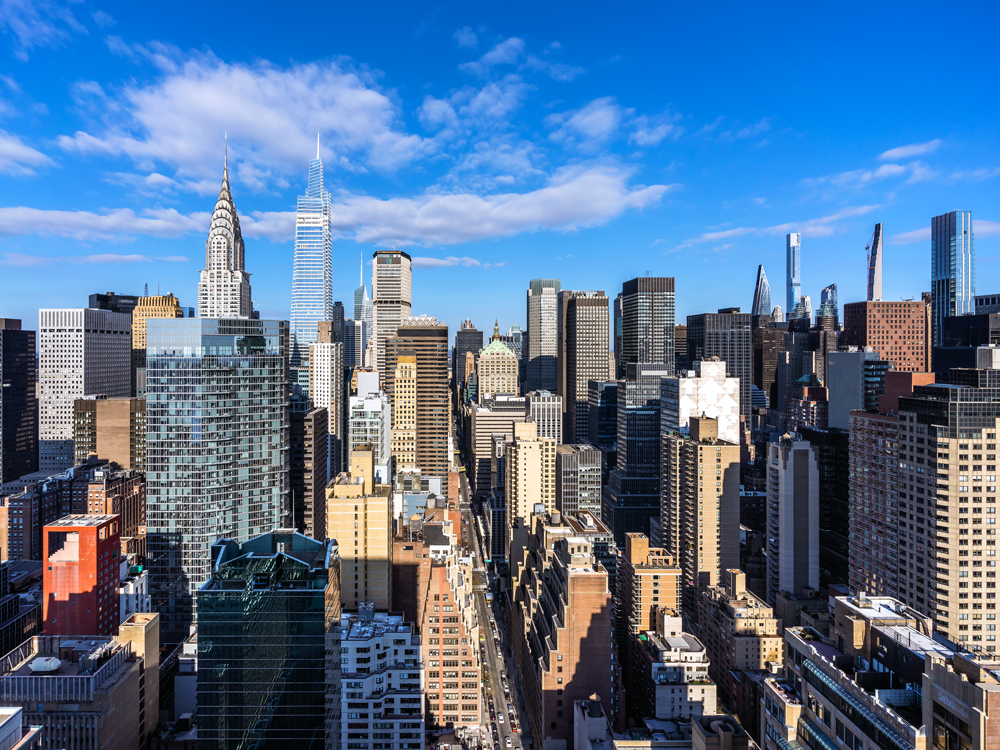
The history of New York City dates back to the arrival of Dutch settlers in the early 17th century, who called their settlement New Amsterdam. When the English took over, they renamed it New York, which has remained its permanent name since 1674. For centuries, the name “New York” only referred to the island of Manhattan, as places like Brooklyn, the Bronx, Queens, and Staten Island were all separate jurisdictions of their own.
During the 1800s, various proposals were floated to combine these five distinct regions into one giant metropolitan area. Proponents of the idea believed it would help the city run more efficiently — and that this new “mega city” would become the economic and cultural center of the entire nation.
A majority of locals were in favor of the idea, though, notably, many residents of Brooklyn worried that it would negatively affect their idea of regional identity. Finally, in 1894, the consolidation proposal was put up for a vote, and it passed with 177,043 votes in favor and 133,309 against. On January 1, 1898, the City of Greater New York was officially formed with its five distinct boroughs that we know today.
The Bronx
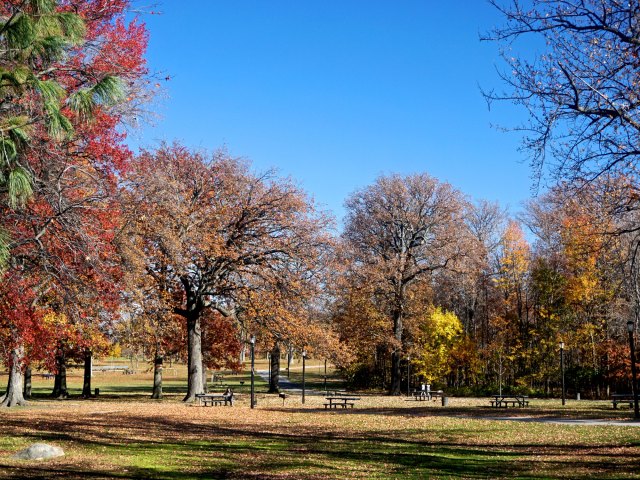
Approximately 1.4 million New Yorkers live among the Bronx’s 42 square miles. The borough is located at the northernmost end of New York City and borders Westchester County to the north. A quarter of the Bronx is covered by parkland, making it the Big Apple’s greenest borough.
Major Landmarks
• Yankee Stadium: Built in 2009, this iconic baseball stadium is home to the 27-time World Champion New York Yankees. The season begins in late March or early April and ends with the playoffs each October. Buy yourself a cap, a hot dog, and a ticket in the bleachers for an iconic New York experience.
• New York Botanic Garden: You won’t find a more beautiful landmark in the Bronx than the borough’s botanical garden. It’s home to historic plants like a Japanese winterberry and columnar tulip tree planted back in 1895, as well as a 155-foot-tall tree located in the Azalea Garden.
• Van Cortlandt Golf Course: The Bronx is also home to America’s first public municipal golf course, which opened in 1895. Back in the day, it was common to see A-listers like Babe Ruth and the Three Stooges playing, and it remains popular among New Yorkers today.
Culinary Highlights
• Arthur Avenue: If you love Italian food, Arthur Avenue is a must-visit. This culinary mecca dates back to the 1700s, and it remains the home of local institutions such as Teitel Brothers — which opened in 1915 — and Casa Della Mozzarella, where you can enjoy hand-pulled fresh mozzarella.
• City Island: City Island is a quaint fishing neighborhood that’s a well-kept secret for serving up the best seafood in New York City. Most of the fare is caught just a few hundred feet away.
• Liebman’s Deli: This 71-year-old Bronx institution is one of the best classic Jewish delis in the city. Try their traditional plates of pastrami on rye, hearty bowls of matzo ball soup, or decadent chocolate babka.
Other Attractions
• Bronx Zoo: This beloved attraction has been at the forefront of city wildlife conservation since first opening in 1899. Today, it’s home to over 11,000 animals, with upwards of 650 individual species, spread out across 265 acres.
• Edgar Allen Poe’s Cottage: While Edgar Allan Poe is more commonly associated with the city of Baltimore, the Bronx is home to a cottage where the famous author resided from 1846 to 1849. During this period, he wrote classics such as Annabel Lee and The Bells.
• Birdwatching: City Island isn’t just known for its seafood — several unique bird species inhabit the area, making it a hotspot for birdwatchers. That includes the bright green parrots that were first brought in from South America and can now be frequently seen flying above the island.
Brooklyn
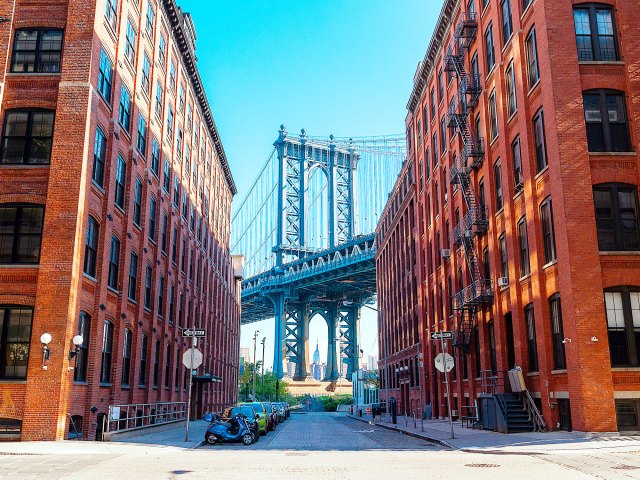
Brooklyn’s Its 2.7-million-plus residents put its population in line with the entire city of Chicago, Illinois. But Brooklyn is more than just tall buildings and concrete streets — the borough is also home to 30 miles of shoreline.
Major Landmarks
• Prospect Park: This 526-acre greenspace opened in 1867 and cost $9.9 million to build, equal to roughly $205 million today. Prospect Park quickly became a beloved spot for picnickers, as it was illegal to picnic in Manhattan’s Central Park in the 19th century.
• Brooklyn Bridge: Spanning the East River to Manhattan, this 5,989-foot-long bridge became the world’s first steel suspension bridge upon its opening in 1883. Today, strolling or biking across the bridge is one of the quintessential Brooklyn experiences.
• Coney Island: Stroll along the boardwalk of this historic oceanside neighborhood and entertainment district while enjoying a classic funnel cake — or, take a ride on the Cyclone, a thrill ride that opened in 1927 and remains the world’s second-steepest wooden roller coaster.
Culinary Highlights
• Defonte’s: Founded in 1922, this beloved local sandwich shop is located in the borough’s Red Hook neighborhood. They’re known for their fried eggplant sandwiches, which have been delighting locals’ tastebuds for over a century.
• Steve’s Authentic Key Lime Pie: Also located in Red Hook along the New York Harbor, this shop founded by a Florida native is known for its fresh mini pies, as well as the chocolate-covered variety that’s served on a stick.
• Ugly Baby: Think you can handle spice? You might want to think again. The menu items at this authentic Thai restaurant in the Carroll Gardens neighborhood are packed with heat. Thankfully, the restaurant also offers an extensive beer menu to give your taste buds a break between bites.
Other Attractions
• Brooklyn Academy of Music: Established in 1861, this Brooklyn institution is the oldest performing arts center in the U.S. You can enjoy classical musical performances, impressive dance routines, and acclaimed films throughout the year.
• Brooklyn Public Library: The borough’s expansive public library was founded in 1896, two years before New York City as we know it today was created. It’s the longest-standing public library system in the Big Apple.
• Brooklyn Botanic Garden: Founded in 1910 as a means for conserving local flora, the Brooklyn Botanic Garden has since expanded to incorporate many Japanese elements, including the Japanese Hill and Pond Garden, plus a vast bonsai collection. You won’t find scenery like this anywhere else in the city.
Manhattan
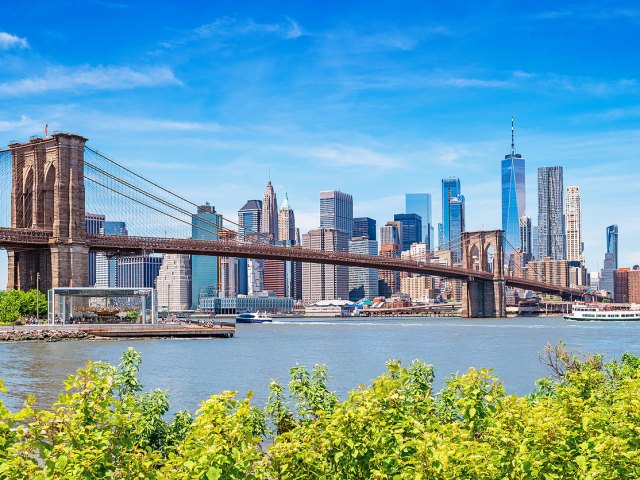
Manhattan is New York City’s smallest borough by area, totalling only 23 square miles of land. But what really separates Manhattan from other boroughs is its population density — it’s home to 1.63 million people and is also the most densely populated county in the U.S.
Major Landmarks
• Empire State Building: Made famous by the 1933 film King Kong, this art deco marvel is among the most recognizable landmarks in the city. It was the tallest building in the world from 1931 until 1971, when it was overtaken by the World Trade Center.
• One World Trade Center: This 1,776-foot-tall skyscraper is the tallest building in the Western Hemisphere, and it exemplifies the city’s ability to overcome tragedy. The observation deck — which offers 360-degree views of the city and nearby states — is a must-visit.
• Broadway: Manhattan’s Theater District spans an area from around 41st Street to 52nd Street, between Sixth and Eighth Avenues. The list of shows is ever-changing, though it’s also seen some incredibly lengthy runs over the years — The Phantom of the Opera was performed a staggering 13,981 times at Broadway’s Majestic Theatre between 1988 and 2023.
Culinary Highlights
• Chinatown: Manhattan has one of the planet’s most vibrant culinary scenes, making it impossible to narrow down a list. But Chinatown is a worthy place to start: Located along Canal Street in southern Manhattan, the neighborhood was formed in the 1870s at a time when Chinese immigrants were flocking to the neighborhood. Now, its winding streets are where you can enjoy soup dumplings, roast duck, and other favorites.
• Little Italy: Situated just north of Chinatown, Little Italy is a hub for Italian food. Be sure to visit during the Feast of San Gennaro, during which the streets are filled with vendors serving up cannolis, fried zeppoles, and more classics.
• Rao’s: Speaking of Italian food, Rao’s is one of the best-known eateries in Manhattan — but good luck getting a table. It’s one of the most exclusive eateries in the city, but even if you can’t score a reservation, you can still enjoy their namesake pasta sauce sold in supermarkets across the country.
Other Attractions
• Grand Central Terminal: This Beaux Arts-style transit hub opened in 1913, and today over 750,000 commuters and tourists pass through it on a daily basis. When you stop by, be sure to look up at the ceiling, which is covered with a marvelous gold and turquoise mural of constellations.
• The Met Cloisters: Though the Met’s namesake museum on Fifth Avenue is more famous, don’t overlook the Met Cloisters. Located at the very northern tip of Manhattan, this is America’s only museum dedicated exclusively to Middle Age-era art and architecture. The museum opened its doors in 1938 and features three medieval chapels and several serene gardens found throughout the property.
• Hess Triangle: If you’re searching for New York’s quirkier side, then Hess Triangle is worth a visit. This 500-square-inch concrete triangle in Greenwich Village is the smallest piece of private property in the city. Though it serves no real purpose, it exhibits the strange and unique history of the island of Manhattan.
Queens
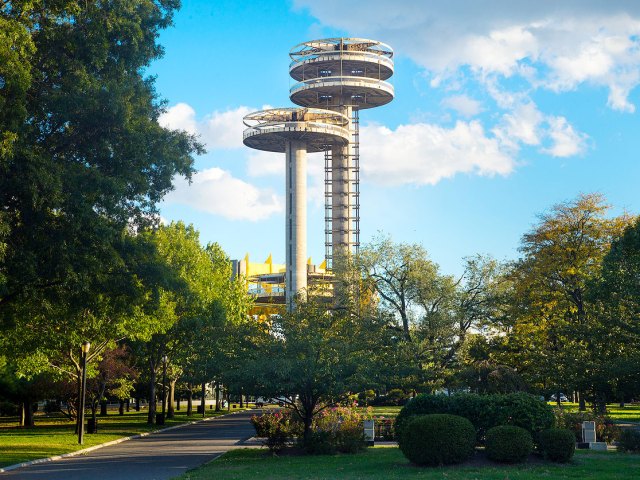
Queens is New York’s largest borough by area, spanning 109 square miles of land and 69 square miles of additional water area. With just over 2.4 million residents who call the borough home, Queens is a melting pot of many immigrant cultures.
Major Landmarks
• JFK and LaGuardia Airports: Queens is home to both major NYC airports, so you’re likely to be passing through the borough for a portion of your visit. JFK is home to the historic TWA terminal, an architectural landmark designed by Eero Saarinen in 1962. The terminal has been repurposed into an aviation-themed boutique hotel, with many of its original retro features intact.
• Citi Field: This baseball stadium opened in 2009 and the home of the beloved baseball underdogs known as the New York Mets. The Mets have played in Queens since 1964 — two years after they began as a baseball franchise — winning two titles in that time.
• Arthur Ashe Stadium: Queens is also the site of the U.S. Open tennis tournament, held annually at Arthur Ashe Stadium. The tournament moved to the Flushing neighborhood in 1978, from its previous location in Forest Hills.
Culinary Highlights
• Flushing’s Chinatown: Much like Manhattan has the Chinatown neighborhood, Queens has a prolific Chinese community of its own in Flushing. Here, you’ll find a wide variety of delicious Chinese fare from a variety of styles, including in Sichuan, Hunan, Cantonese, and Fujian.
• Temple Canteen: This vegetarian cafeteria serves up some of the most authentic Indian fare in the city. The restaurant is located adjacent to the Ganesh Temple in Flushing, a fascinating structure built from stone that was imported from India.
• Greektown: The Astoria neighborhood, located along the East River in the western section of the borough, is home to Greektown, where the streets are lined with restaurants serving up fresh salads, decadent dips, and yummy gyros.
Other Attractions
• Louis Armstrong House Museum: In the 1940s, Queens served as a hub of the burgeoning jazz scene. Trumpeter Louis Armstrong lived in the borough for the final three decades of his life, and you can learn more about the musical legend at this fascinating museum.
• Flushing Meadows-Corona Park: Now a beautiful and expansive park, Flushing Meadows was the site of the 1964 world’s fair, which introduced concepts like videoconferencing, push-button telephones, and the Ford Mustang automobile. Today, it’s a lovely place to stroll around with the family and enjoy a picnic.
• First-Ever Road Paved for Cars: Many historic milestones have occurred in Queens — including the world’s first-ever road paved exclusively for cars. The road was created in 1908 in the Hollis Hills neighborhood, and is now primarily used as a bike path.
Staten Island
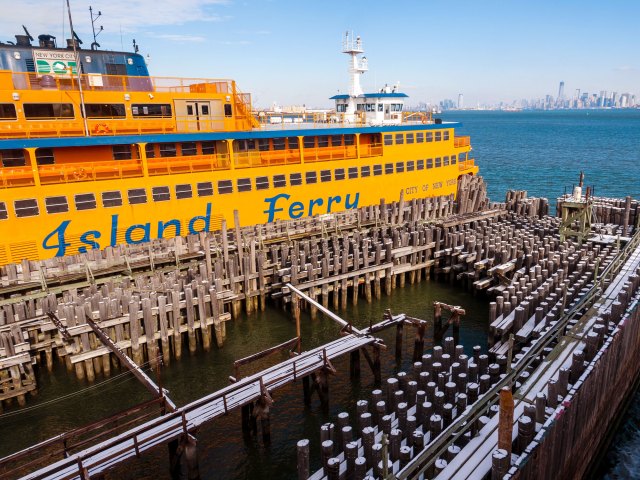
Of the five New York City boroughs, Staten Island is by far the least populated, with just under 500,000 of the 8-million-plus people who call the Big Apple home. But despite its comparatively small population, Staten Island is the third-largest borough by land area, covering 59 square miles, with an additional 44 square miles of water area falling within the borough’s limits.
Major Landmarks
• Staten Island Ferry: No trip to New York City is complete without an excursion aboard the famed Staten Island Ferry. These commuter ships run between Staten Island and Lower Manhattan 24 hours a day, taking passengers along the scenic New York Harbor past the majestic Statue of Liberty. Still not convinced? What if we told you it’s 100% free?
• Freshkills Park: This new park — the largest to be developed in NYC in over 100 years — is being built on the site that once served as the world’s largest landfill. When all phases of construction are finally completed in 2036, it will be nearly three times the size of Central Park in Manhattan.
• Fort Wadsworth: Occupying 226 acres on the northeastern shore of the borough, this fort dates back to the time of the American Revolution, as it was built in 1779. Today, it’s protected by the National Park Service. Visit to learn more about the history of the fort and the role it played during the fight for American independence.
Culinary Highlights
• Little Sri Lanka: Staten Island has a thriving Sri Lankan population, so it should come as no surprise that the borough is home to some of the most delicious Sri Lankan food in the city. The restaurants are found primarily around the Tompkinsville neighborhood, and Lakruwana is a particularly popular spot.
• Denino’s Pizzeria: This Staten Island staple opened as a bar in 1937, but became more famous as a pizzeria in the 1950s. They’re best known for their legendary clam pizza — a thin crust pie topped with handmade mozzarella and plump clams.
• Shaw-nae’s House: If you’re looking for some of the best soul food in the city, look no further than Shaw-nae’s House in Stapleton Heights. Be sure to order some of their signature oxtail plus a plate of “sugar daddy wings,” which are said to be a combination of chicken and waffles in both flavor and texture.
Other Attractions
• Sri Lankan Art and Cultural Museum: To go along with their sizable Sri Lankan community, Staten Island is also home to the only museum located outside of Sri Lanka dedicated specifically to the nation’s heritage.
• Historic Richmond Town: This themed historical museum features actors and interpreters who discuss what life was like in Staten Island during the 17th and 18th centuries.
• Jacques Marchais Museum of Tibetan Art: This unique museum showcases art from Tibet, Mongolia, and China within its stone buildings, which are designed to mimic Buddhist mountain monasteries.
Frequently Asked Questions
• What is the most expensive borough to live in New York City? Manhattan — A 2023 report named the borough not only the most expensive place to live in the city, but also the entire country. The average rent cost $4,300 per unit.
• What is the cheapest borough to live in New York City? Staten Island.
• Which borough has the highest population? Brooklyn — If the borough were its own city, it would be the third-largest city in America.
• Where is the largest park in New York City? The Bronx’s Pelham Bay Park covers 2,764 acres, three times the size of Central Park.
• What is the city’s most diverse neighborhood? Queens — residents speak almost 150 different languages.
• What is the tallest building outside of Manhattan? The Brooklyn Tower stands at 1,066 feet, ranking No. 11 for New York City’s tallest buildings.
• What is the “Sixth Borough” of New York City? Many places that are outside city limits but are culturally or politically aligned with New York claim the nickname the “sixth borough.” But one of the most common so-called “Sixth Boroughs” is, together, the cities of Jersey City and Hoboken, which are located directly across the Hudson River and are a quick ride away on the PATH train from Manhattan.
More from our network
Daily Passport is part of Optimism, which publishes content that uplifts, informs, and inspires.






